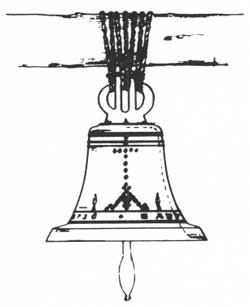

|
Epilogue Two hundred years after Domínguez, the survival count is nothing to brag about. Of the thirty-two churches or chapels he recorded in 1776, twelve persist on more or less the same foundations in more or less the same form—San Miguel in Santa Fe, Santa Cruz de la Cañada, Picurís, Las Trampas, Tomé, Cochití, San Felipe, Santa Ana, Zia, Laguna, Ácoma, and Isleta. They are better protected today than ever before. Federal legislation administered by the National Park Service seeks to guard even the historic environment. At the state level the Cultural Properties Review Committee has proved itself tough enough to take on the developers. Not that the preservationists have it all their own way. They could not agree if they did. Practical considerations of economics, property ownership, and religion keep intruding. What would happen, say, if the people of San Felipe pueblo, even in the face of a properly filed Form 10-300 (National Register of Historic Places Inventory—Nomination Form), voted to demolish their adobe church in favor of a replica of the Air Force Academy chapel? That raises a less bizarre question. At what moment in history should a New Mexico mission church be "frozen"—brand-new, as the archaeologist says it stood when first built in 1729? as Domínguez saw it in 1776? after Fray Teodoro added the three-tiered towers in 1818? with the peaked roof and gingerbread spires that so delighted Father Giroux in the 1890s? or as a noble ruin, silent and evocative of the spirit of the place? There is no pat answer. Although the familiar elements of the story—the wear and repair, the alterations, the collapse and abandonment or the rebuilding—fit together differently in each individual case, none of them has transcended its adobe nature. None is incorrupt. None is unchanged. Even in our day of architectural historians and historical architects, of advisory committees and zoning ordinances, of environmental impact studies, photogrammetry, and epoxy, perhaps we should listen again to the words God spoke to his impatient servant Job—not as a deterrent to action but as an antidote for pride.
Copyright © 1980 by the University of New Mexico Press. All rights reserved. Material from this edition published for the Cultural Properties Review Committee by the University of New Mexico Press may not be reproduced in any manner without the written consent of the author and the University of New Mexico Press. | ||||||
 Top Top
|
| ||||||


